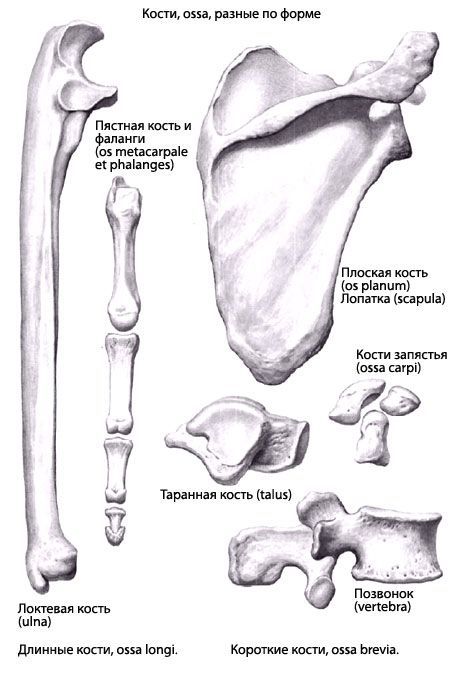Medical expert of the article
New publications
Bone classification
Last reviewed: 06.07.2025

All iLive content is medically reviewed or fact checked to ensure as much factual accuracy as possible.
We have strict sourcing guidelines and only link to reputable media sites, academic research institutions and, whenever possible, medically peer reviewed studies. Note that the numbers in parentheses ([1], [2], etc.) are clickable links to these studies.
If you feel that any of our content is inaccurate, out-of-date, or otherwise questionable, please select it and press Ctrl + Enter.
The classification of bones is based on the following principles: shape (bone structure), their development and function. The following groups of bones are distinguished: long (tubular), short (spongy), flat (wide), mixed (abnormal) and pneumatic.
Long bones form the solid base of the limbs. They function as long bony levers. These bones are shaped like tubes. The diaphysis (body of the bone) is usually cylindrical or triangular. The thickened ends of a long tubular bone are called epiphyses. The epiphyses contain articular surfaces covered with articular cartilage.

The epiphyses participate in the formation of joints with adjacent bones. The section of bone located between the diaphysis and epiphysis is called the metaphysis. This section of the bone corresponds to the epiphyseal cartilage ossified during postnatal development, located between the diaphysis and epiphysis. Due to the metaphyseal cartilaginous zone, the bone grows in length. Among the tubular bones, it is customary to distinguish long (humerus, femur, etc.) and short (metacarpal and metatarsal) bones.
Short, or spongy, bones are located in those parts of the skeleton where significant mobility of the bones is combined with a large mechanical load (bones of the wrist and tarsus). Short bones also include sesamoid bones, located in the thickness of some tendons. Sesamoid bones, like peculiar blocks, increase the angle of attachment of the tendon to the bone and, accordingly, the force of muscle contraction.
Flat bones form the walls of cavities, perform protective functions (bones of the skull roof, pelvis, sternum, ribs). These bones have significant surfaces for muscle attachment.
Mixed bones are complexly constructed, their parts are similar in appearance to bones of different shapes. For example, the body of a vertebra is classified as a spongy bone, and its processes and arch are classified as flat bones.
Pneumatic bones contain cavities lined with mucous membrane and filled with air. Some bones of the skull (frontal, sphenoid, ethmoid, temporal, maxillary) have such cavities. The presence of cavities in the bones reduces the weight of the head. The cavities also serve as a voice resonator.

There are irregularities on the surface of each bone. These are the places where muscles, fascia, and ligaments begin and attach. Elevations, processes, and tubercles are called apophyses. Their formation is facilitated by the pull of muscle tendons. In areas where a muscle attaches with its fleshy part, there are usually deepened areas (pits).
In places where vessels or nerves are adjacent, there are grooves and notches on the bone surface. In triangular tubular bones, pointed edges and flat surfaces between them are designated; in flat bones, edges, corners, and surfaces are distinguished.


 [
[